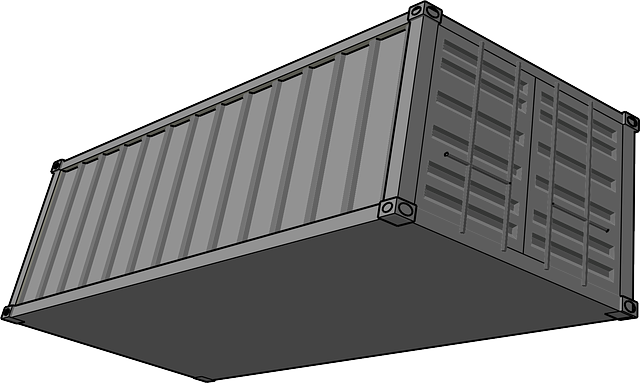In today's volatile business environment, unpredictable risks like natural disasters, political unrest, and market fluctuations can severely impact operations and finances. To mitigate these effects, businesses should understand and proactively manage risks through diversification, enhanced security, and cost-effective cargo insurance savings. Achieving cargo insurance savings involves reassessing policies, exploring alternative risk management techniques, adopting dynamic pricing models, and leveraging industry trends alongside technology to minimize expenses without sacrificing operational integrity. Aligning specific business needs with the right insurer is crucial for finding tailored insurance policies that offer the right balance between coverage and cargo insurance savings.
In today’s unpredictable business landscape, preparing for unforeseen risks is paramount. This article equips businesses with a comprehensive guide to navigate and mitigate potential threats, focusing on cost-effective insurance strategies, particularly highlighting cargo insurance savings. We explore key areas such as understanding the impact of unforeseen events, efficient coverage optimization, and selecting suitable insurers. By following practical steps outlined here, businesses can ensure they’re not just insured but also strategically positioned for financial resilience and long-term success, with a special focus on maximizing cargo insurance savings.
Understanding Unforeseen Risks and Their Impact on Businesses

In today’s unpredictable business landscape, unforeseen risks can arise at any moment, posing significant threats to companies across industries. These risks, which may include natural disasters, property damage, legal liabilities, or even sudden market fluctuations, can have devastating financial implications for businesses, potentially leading to operational disruptions and substantial losses. For instance, a manufacturer relying on global supply chains might face cargo insurance savings in the event of shipping delays caused by unforeseen political unrest or environmental catastrophes.
Understanding these risks is the first step towards effective risk management. Businesses must assess their vulnerability to various hazards and implement strategies to mitigate their impact. This involves careful planning, including diversifying operations, implementing robust security measures, and, crucially, securing appropriate insurance coverage. Cost-effective insurance strategies can provide a safety net, ensuring businesses are equipped to navigate unforeseen challenges without being overwhelmed by their financial consequences.
Exploring Cost-Effective Insurance Strategies for Cargo Insurance Savings

In today’s dynamic business landscape, securing cost-effective insurance strategies is more crucial than ever for shippers and logisticians aiming to safeguard their cargo and cut expenses. Cargo insurance savings are not just about minimizing outlays; they’re a strategic move to mitigate risks and ensure business continuity. By exploring innovative coverage options and negotiating with insurers, companies can significantly reduce costs without compromising the integrity of their operations.
One avenue to achieve cargo insurance savings involves reassessing traditional policies. For instance, reviewing the level of coverage required for specific goods, considering alternative risk management techniques like freight insurance pools, or adopting dynamic pricing models that adjust based on market conditions and risk profiles can all lead to substantial savings. Staying informed about industry trends and leveraging technology to streamline processes further enhances the potential for optimal cargo insurance savings.
Assessing Risk to Optimize Coverage and Costs: A Step-by-Step Guide

Assessing risk is a crucial first step in optimizing your insurance coverage and managing costs. Start by identifying potential risks specific to your situation – this could be related to your industry, location, or the types of goods you transport (in the case of cargo insurance savings). Create a comprehensive list of these perils, considering both frequent and rare occurrences.
Next, evaluate the likelihood and potential impact of each risk. Prioritize them based on this assessment, focusing on high-impact, low-probability risks that demand more attention. This strategic approach ensures you’re not overpaying for less critical concerns while ensuring adequate protection against significant threats. By carefully managing these variables, you can tailor your insurance policy to offer the right balance between coverage and cost savings.
Navigating the Market: Choosing the Right Insurer for Your Business Needs

Navigating the market for insurance can be a daunting task, especially as businesses seek cost-effective strategies to prepare for unforeseen risks. The key lies in understanding your specific business needs and matching them with the right insurer. Many companies often overlook this crucial step, leading to inadequate coverage or higher-than-necessary premiums.
When choosing an insurer, consider the type of cargo insurance savings you require. Are you looking for comprehensive coverage at competitive rates? Or do you need specialized insurance for specific high-risk goods? Research potential insurers, comparing their policies, pricing, and customer reviews. Opting for well-established companies with a proven track record can offer peace of mind and ensure you receive the best cargo insurance savings tailored to your business.
In navigating the unpredictable landscape of unforeseen risks, businesses can safeguard their operations and secure their future by implementing strategic cost-effective insurance strategies. By understanding these risks, exploring innovative solutions for cargo insurance savings, and choosing the right insurer, companies can optimize coverage while minimizing costs. Embracing these practices ensures resilience against unexpected events, ultimately fostering a more stable and prosperous business environment.
